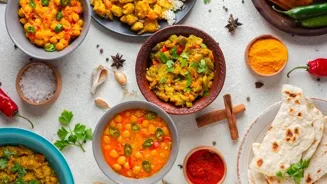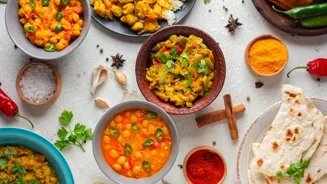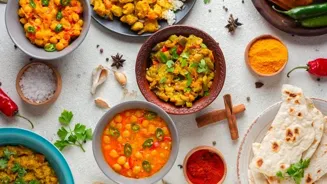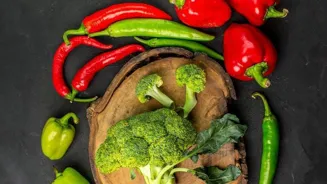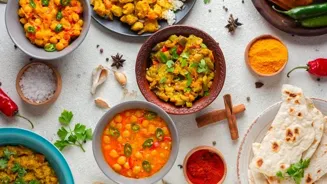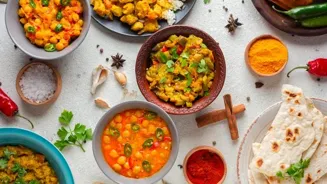Discover the art of cooking with seasonal ingredients in Indian cuisine. Enhance flavors, health, and environment. Read on to learn more!
The Indian kitchen is a celebration of flavours, and what better
way to enhance those flavours than by using ingredients that are fresh, local, and in season? Cooking with seasonal produce not only makes your meals taste better, but it's also good for your health and the environment.
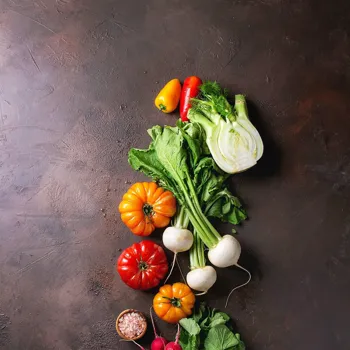
Plus, it is also gentle on your pocket! In this article, we'll explore how to embrace seasonal cooking with a focus on vegetarian Indian recipes, ensuring delightful and nutritious meals throughout the year.
Embracing seasonal cooking for flavor, nutrition, and sustainability
The Indian kitchen is deeply connected to the rhythms of nature. Our grandmothers instinctively knew when to use specific vegetables and fruits, understanding their peak flavour and nutritional value. This practice isn't just tradition; it's a smart approach to eating.
When you cook with seasonal ingredients, you're choosing produce at its prime, meaning it's bursting with flavour and packed with nutrients. Moreover, seasonal produce are often locally available and are more affordable. It reduces the carbon footprint associated with long-distance transportation.
So, let's rediscover the joys of seasonal cooking and bring that traditional wisdom back into our kitchens.
Summer foods: hydrating veggies, mango desserts, cooling drinks
Let's start with summer when the sun is at its zenith. This is the time for light and cooling foods. Think of juicy mangoes, crisp cucumbers, and refreshing watermelons.

Summer vegetables include gourds like bottle gourd (lauki), ridge gourd (turai), and bitter gourd (karela), which are known for their hydrating properties. For a refreshing summer dish, try Mango Shrikhand.
Shrikhand, a creamy hung curd dessert, gets a seasonal twist with the addition of fresh mango pulp. Another option is Cucumber Raita, a cooling yogurt-based side dish, helps to balance out spicy meals. Remember to stay hydrated during the hot months.
Prepare cooling drinks like Aam Panna (raw mango drink) or Chaas(buttermilk) to stay hydrated and refreshed.
Monsoon brings fresh ingredients like corn and greens for delicious dishes
As the monsoon arrives, bringing relief from the summer heat, nature showers us with a new set of ingredients. Corn (bhutta) becomes readily available, offering a delightful snack roasted over charcoal.
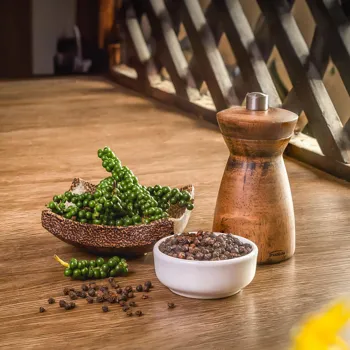
Leafy greens like spinach and fenugreek (methi) thrive in the rain, providing essential nutrients. Root vegetables such as colocasia (arbi) also appear in the market. Use corn to make Bhutta Masala, a spiced corn snack that is simply irresistible.
Or try Palak Paneer, a creamy spinach and cottage cheese dish, which is fulfilling and nutritious. Be sure to thoroughly wash leafy greens to remove any dirt. Also, add some ginger and garlic in your recipes to support your immunity during the monsoon season.
Do not forget to make delicious pakoras with seasonal vegetables and enjoy with a hot cup of masala chai for the perfect monsoon treat.
Winter brings vibrant veggies, cozy recipes like Gajar ka Halwa, Aloo Gobi, Sarson ka Saag
With the arrival of winter and sweater weather, we get colorful veggies that add warmth and vibrancy to our plates. Bright orange carrots, ruby red beets, and vibrant green peas are abundant. Winter is also the season for cruciferous vegetables like cauliflower and cabbage.
Try Gajar ka Halwa, a sweet carrot pudding, a classic winter indulgence. Another option is Aloo Gobi, a comforting potato and cauliflower sabzi, which is perfect with roti or paratha. Consider including ginger, garlic, and turmeric in your winter recipes.
They have warming and immunity-boosting properties. Fill up on Sarson ka Saag and Makki ki Roti during winters.
Fresh spring ingredients offer light, refreshing meals for the season
As winter fades and spring arrives, new ingredients that are both fresh and delicate emerges. Radishes, spring onions, and various salad greens become available, offering a light and refreshing change from the heavier winter meals. Look for early harvests of fruits like strawberries.
Make a refreshing Radish and Carrot Salad with a lemon dressing for a light lunch. You can also enjoy Strawberry Lassi in a breakfast. As the weather transitions, incorporating lighter dishes can help you feel refreshed.
Use simple cooking techniques to let the fresh flavors of the ingredients shine through. Spring is a good time to include sprouts in your diet to detoxify.
Cook seasonally for fresh, flavorful meals year-round
Cooking with seasonal ingredients is not just about choosing the right vegetables and fruits, its also about adapting your cooking methods. In summer, use light cooking methods which retain the freshness of the ingredients. During monsoons, focus on recipes that are hearty and immune-boosting.
In winter, use techniques like roasting and slow cooking to bring out the natural sweetness of winter vegetables. In spring, opt for quick and easy dishes that celebrate the delicate flavours of spring greens.
With a little planning and knowledge, you can create delicious and nutritious meals that are in harmony with the seasons. By following these tips and recipes, you can rediscover the joy of cooking with seasonal ingredients and make the most of what nature has to offer throughout the year.
AI Generated Content. Glance/InMobi shall have no liability for the content